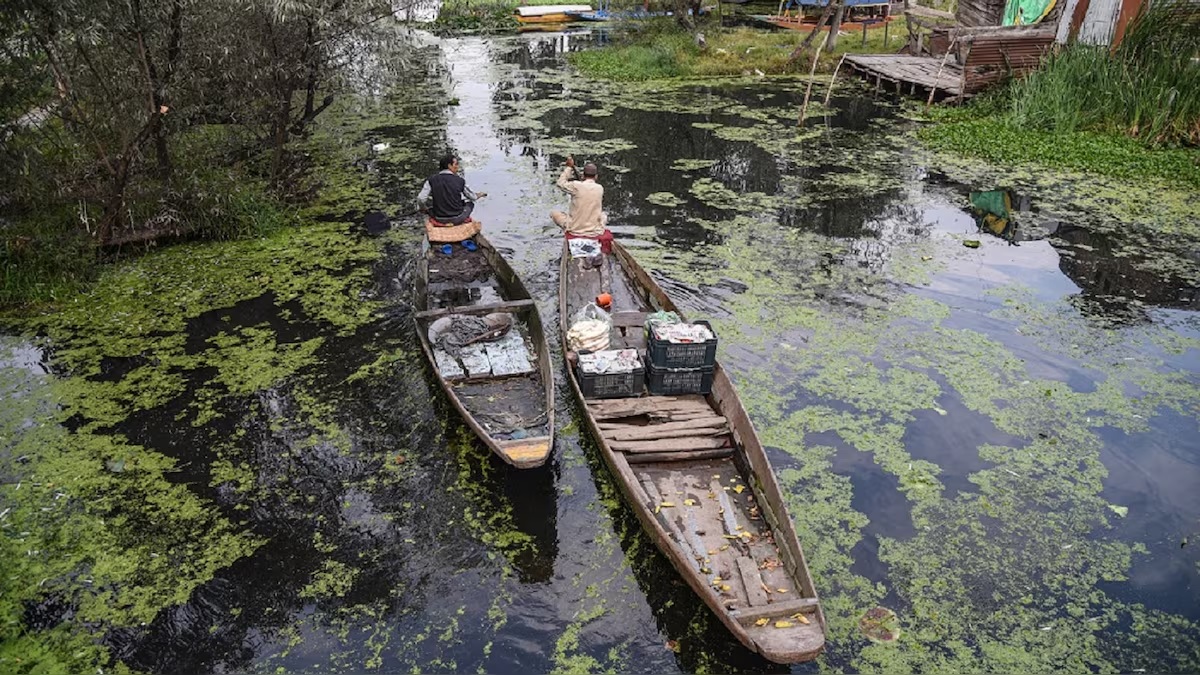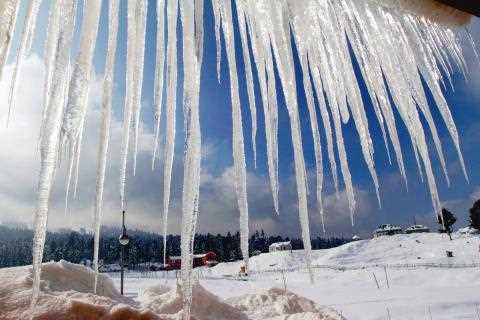Unseasonal Heat, Snowfall Deficits, and Climate Anomalies Put Jammu & Kashmir’s Agriculture and Hydropower at Risk
By: Javid Amin
A Winterless Winter in the Valley of Seasons
Nestled between the towering Himalayas and the Pir Panjal range, Kashmir has long been celebrated as a “paradise on Earth,” where winters cloak the landscape in thick snow, replenishing rivers, nurturing orchards, and sustaining life. But this year, the Valley’s heartbeat has faltered. As the calendar turned to 2025, Kashmir’s iconic Chilai Kalan—the 40-day period of harsh winter from December 21 to January 29—arrived without its trademark snowfall. Instead, unseasonal warmth, arid skies, and shrinking glaciers have left farmers anxious, scientists alarmed, and communities grappling with an uncertain future.
This isn’t just a seasonal oddity; it’s a symptom of a deeper crisis. With precipitation deficits nearing 77% in January and temperatures soaring 6–7°C above normal, Jammu & Kashmir (J&K) faces a dual threat: collapsing agricultural systems and dwindling water reserves. Here’s an in-depth exploration of the causes, consequences, and urgent solutions to this unfolding disaster.
The Data Behind the Disaster
1.1 A Snowless Chilai Kalan: By the Numbers
- Precipitation Deficit: Between January 1 and February 6, 2025, Kashmir recorded a 76.87% shortfall in precipitation, with actual rainfall at just 22.91% of the normal 99.07%. Jammu fared worse, with an 80.27% deficit.
- Temperature Anomalies: January 2025 saw temperatures 6–7°C above average, with south Kashmir experiencing a 10% spike in surface temperatures from January 2–4, triggering rapid snowmelt.
- La Niña’s Broken Promise: Meteorologists predicted heavy snowfall due to the 2024–2025 La Niña cycle (a cooling of Pacific waters linked to wetter winters). Instead, J&K received barely 30% of its typical snowfall.
1.2 The Science of the Shift: Air Advection and Global Warming
Dr. Mukhtar Ahmad, Director of IMD J&K, explains that the unseasonal warmth resulted from “air advection”—a phenomenon where warm, moist air from the Arabian Sea invaded the Himalayan region, overriding cold Arctic winds. While advection isn’t new, climate change has amplified its intensity.
Global Context: The World Meteorological Organization (WMO) notes that 2024 was the hottest year on record, with Himalayan glaciers retreating 65% faster than in the 20th century. Kashmir’s snow cover has shrunk by 18% since 2000, per ISRO data.
Agriculture Under Siege
2.1 Orchards in Peril: Apples, Saffron, and the Threat of Pestilence
Kashmir’s $2 billion apple industry—which contributes 8% to India’s GDP—relies on winter snowfall to recharge groundwater and suppress pests. With snow absent, farmers like Rashid Ahmad report:
- Early Bud Break: Warmth triggers premature flowering, exposing blossoms to late frosts.
- Pest Explosions: Mites, aphids, and codling moths thrive in dry conditions. “Our trees are already showing infestations,” says Ahmad.
- Irrigation Crisis: Over 70% of Kashmir’s agriculture is rain-fed. Snowmelt-fed streams like the Lidder and Sindh are running 40% below normal, per the J&K Water Resources Department.
2.2 Saffron’s Slow Death: A Symbol Fades
Pampore’s saffron fields—producing the world’s most expensive spice—require 1,200–1,500 mm of annual rainfall. With deficits persisting, yields have dropped 60% since 2020. Farmers now rely on costly irrigation, pushing many into debt.
Water Security: Rivers, Glaciers, and the Hydropower Crisis
3.1 Vanishing Glaciers: The Indus Basin’s Lifeline Dries Up
J&K’s 18,000 glaciers feed the Indus River system, supplying water to 300 million people across India and Pakistan. But the Kolahoi Glacier, Kashmir’s largest, has retreated 2.5 km since 1850. Dr. Shakil Romshoo, a glaciologist, warns: “By 2100, we could lose 70% of Himalayan glaciers if emissions aren’t curbed.”
3.2 Hydropower in Jeopardy
J&K’s 50+ hydropower projects, including the 1,000 MW Pakal Dul Dam, generate 3,500 MW annually. However, reduced river flows have cut output by 25% this winter. “Dry spells mean less power for industries and households,” says engineer Arif Khan.
Human Stories: Voices from the Frontlines
4.1 The Shepherd’s Struggle: Nomadic Communities Face Collapse
Gujjar and Bakarwal tribes, who herd livestock across alpine pastures, report dwindling grasslands. “Without snow, there’s no water for our sheep. We’ve lost 50 animals this year,” says shepherd Mohammad Yusuf.
4.2 Urban Water Rationing: Srinagar’s Thirst Grows
Srinagar’s Dal Lake, once a perennial water source, has shrunk 60% in area since 1980. The city now rations water, with taps running dry for 8–10 hours daily.
Solutions and Pathways to Resilience
5.1 Climate-Smart Agriculture
- Drip Irrigation: Israel’s drip systems could cut water use by 40% in apple orchards.
- Pest-Resistant Crops: ICAR is developing early-maturing apple varieties.
5.2 Glacier Conservation and Policy Action
- Artificial Glaciers: Engineer Sonam Wangchuk’s “ice stupas” store winter stream water as ice.
- Renewable Energy Shift: Solar farms could reduce reliance on hydropower.
Bottom-Line: A Call to Action Before the Springs Run Dry
Kashmir’s snowless winter is a wake-up call—not just for India, but for the world. Without urgent steps to curb emissions, protect glaciers, and modernize farming, the region’s ecosystems and economies face irreversible damage. As Dr. Parvez Teli warns: “We are stealing water from our children’s future.”



